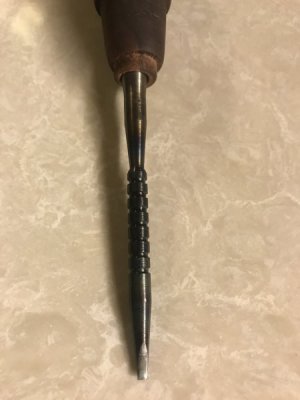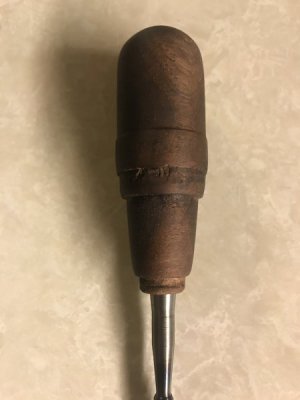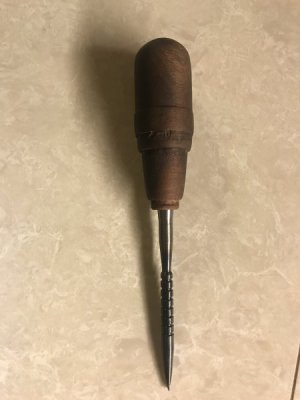Having fun making some basic projects on the lathe.
My knurler is tough to figure out, only the top wheel really digs in even when the two wheels contact the work at the same time. I suspect it's a cheap pos. But it could be me..lol
Turned down a bolt for my tailstock eject function with a new drill chuck. The chuck has a hollow mt2 taper and would not push out when the drill action retracted into the tailstock. Now the bolt head catches inside tail and when I retract the drill bit all the way it pushes the chuck out.
Completed a wiggle bar tonight out of some scrap steel rod.
Really enjoying working on the lathe and trying new cuts.
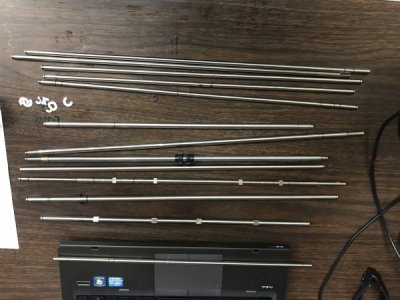
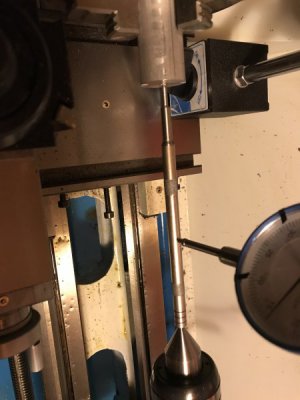
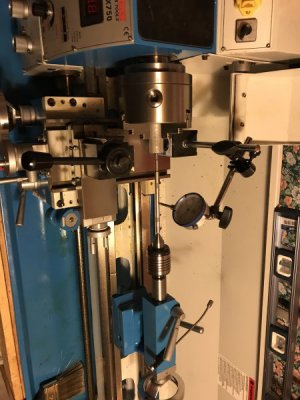
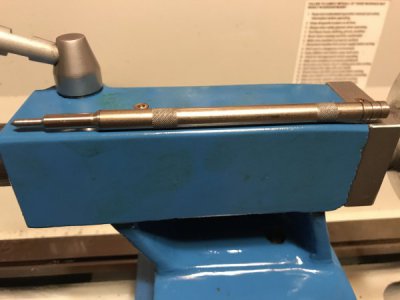
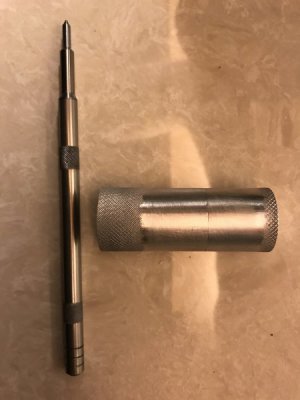
My knurler is tough to figure out, only the top wheel really digs in even when the two wheels contact the work at the same time. I suspect it's a cheap pos. But it could be me..lol
Turned down a bolt for my tailstock eject function with a new drill chuck. The chuck has a hollow mt2 taper and would not push out when the drill action retracted into the tailstock. Now the bolt head catches inside tail and when I retract the drill bit all the way it pushes the chuck out.
Completed a wiggle bar tonight out of some scrap steel rod.
Really enjoying working on the lathe and trying new cuts.







